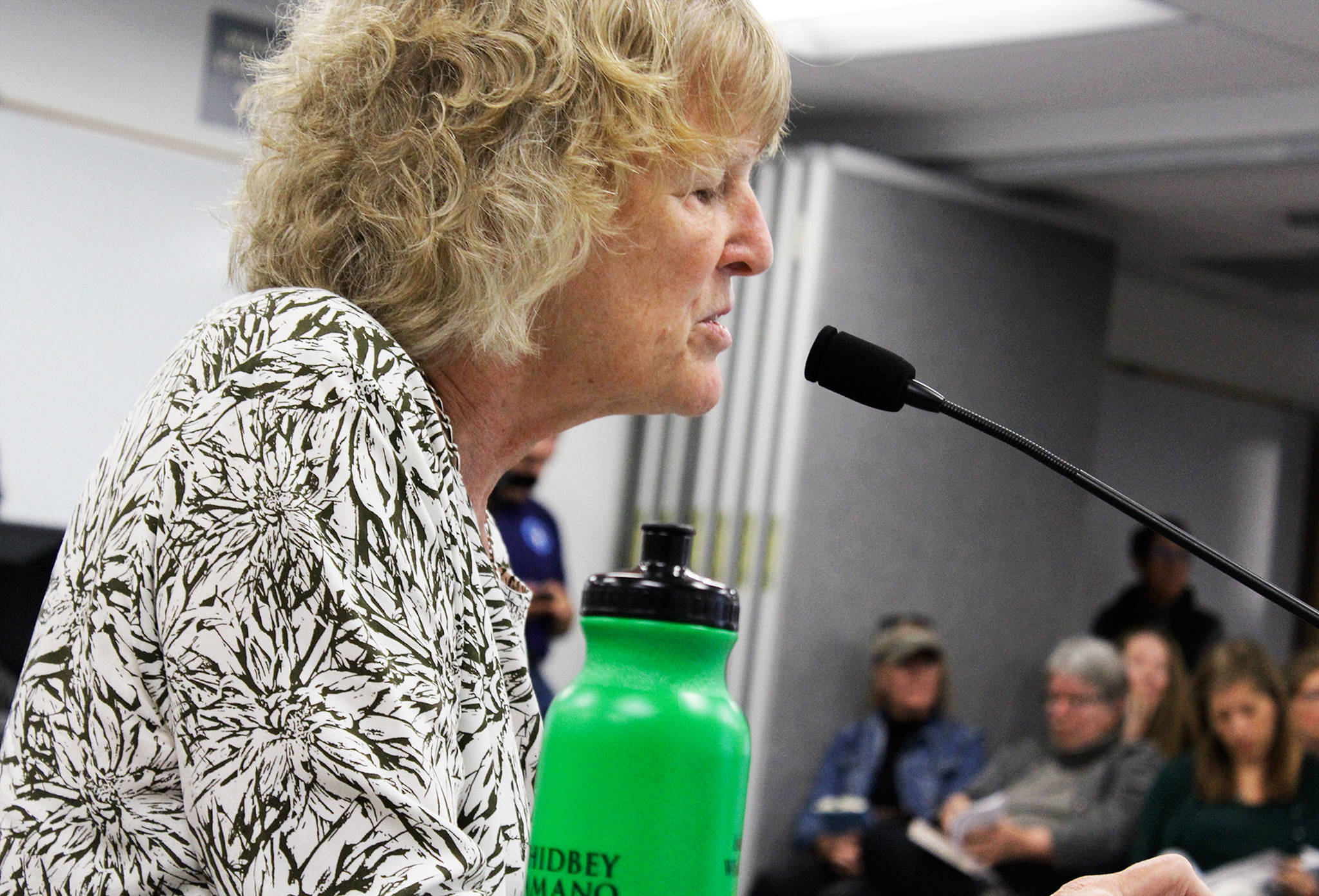The path to a $50,000 grant from Island County proved long — and long winded.
And not without some harsh words, accusations, denials and clarifications.
In the end, commissioners Helen Price Johnson and Rick Hannold voted to approve the nonprofit Whidbey Camano Land Trust’s request to improve Ebey’s Landing Reserve trails.
Commissioner Jill Johnson voted “no.”
The nearly two-hour funding debate Tuesday veered so far off course that even the name “Hitler” was thrown into the mix, as were words such as “collusion,” “extortion” and “political payback.”
JOHNSON SAID she could not reconcile exposing trail users to “intolerable” conditions cited by Central Whidbey residents who claim there are public health risks resulting from practicing EA-18G Growlers based at Naval Air Station Whidbey Island.
“Why would you want to expose the public to the same experience you say is intolerable?” Johnson asked. “In some ways, this is what you’ve asked us to do. I feel like this is a result of years of listening.”
Whidbey Camano Land Trust raises private money and solicits government grants to preserve land for community use. It sought funding from the Conservation Futures Program, a property-tax-supported fund aimed at protecting and preserving land of public interest.
Of the money requested, $40,000 will be used to plan out another three miles of trails, $10,000 used when actual trail building begins.
Navy Growler jets fly overhead and perform aircraft-carrier-landing practice at Outlying Field Coupeville, which is within earshot of Ebey’s Reserve and a series of trails that lead past working farms, sweeping green fields, wildlife habitat, wetlands, bluffs and beaches.
Island County commissioners have awarded the Land Trust money for similar projects in the past.
“AGAIN AND again, the Camano Land Trust has demonstrated its ability to highly leverage each dollar of Conservation Future Funds it is granted by securing other funds,” said Land Trust Executive Director Pat Powell. “The Walking Ebey’s Corridor Trail will serve the citizens of Island County as well as thousands of visitors.”
The Land Trust scored well on the grant application’s 12-point criteria, but compatibility of recreational land use with a nearby Navy jet practice field took front and center at the contentious board meeting.
People on both sides of the debate called the others hypocrites.
During a May 10 work session Hannold and Johnson discussed a need to request additional information that centered on exposing hikers to the noise of EA-18G Growlers.
PRICE JOHNSON was out of town for the May meeting but attended via telephone. She left the meeting early and said she didn’t know the other two commissioners were requiring the county health officer and other entities to review health hazards that might arise from the mix of public hiking trails and Navy Growlers flying overheard.
“The Health Officer has expressed concerns. I didn’t tell him what to say,” Johnson said. “I just wanted him to clarify, ‘Do you think it’s safe?”
Commissioners said they were satisfied with the additional material submitted by the Land Trust but did not elaborate on the statements they had received.
The irony of requesting health data was not lost on some who asked commissioners and the county Board of Health to collect information on potential health hazards from long-term exposure to Growler activity over Central Whidbey.
Those requests have repeatedly been blocked by Hannold and Johnson.
MARIANNE EDAIN, of Whidbey Environmental Action Network, said concern over Growler noise may become moot because drones could someday do the work of Growlers.
“The assumption is Growlers will always be here,” Edain said. “But Growlers come and Growlers go. The prairie will be here hopefully for the next 10 or 20 millennia.”
Price Johnson assured those at the meeting that no violations of procedure occurred during the application review, including at the May 10 work session.
“There was nothing nefarious about the process that was followed,” Price Johnson said.
Her objection, she explained, was that criteria that had no precedent were added on a grant application after it was submitted.
“We have all struggled with the nuances,” of suggestions of vindictiveness and punitive action, she said.
“There was a cloud over this that was really unfortunate.”
ALSO DISCUSSED were potential expansion of areas known as accident potential zones or APZ’S. These would be expanded near Outlying Field Coupeville if the military increases Growler operations.
Johnson said she couldn’t condone using public funds to expand a trail recreation area near an active military airfield engaged in touch-and-go landings, especially when some Central Whidbey residents have long complained the two entities are incompatible.
Johnson said she also voted in 2013 against funding for the Kettle Trails alongside State Highway 20 in Coupeville because of its proximity to OLF Coupeville.
“These incompatibility issues are going to get harder and harder over the years,” Johnson said. “This is a very complex issue and it’s a long-game issue for me.”



